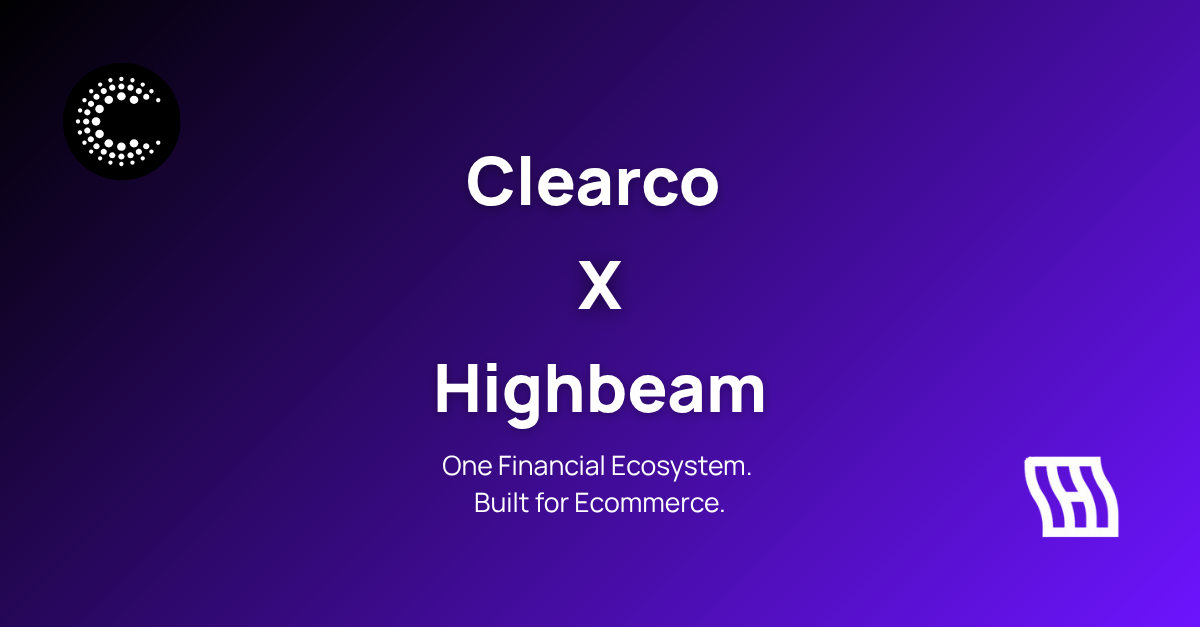Creative ways to secure alternative lending

Creative ways to secure alternative lending
Only about a third of new businesses survive their first decade.
The way startup e-commerce businesses secure funding has changed drastically over recent years, but there are still many challenges facing founders. In fact, lack of capital remains the number one barrier to e-commerce growth: 50% of all startups don’t survive their first 5 years, with lack of access to capital as the biggest barrier to success.
So what’s a founder to do, especially if you’re having trouble securing funding through more traditional means like banks loans and lines of credit? The truth of the matter is that over 80% of Americans are unable to access equity or debt financing, with e-commerce businesses often being worse off given they have few hard assets—so it certainly might feel like an uphill battle.
But it doesn’t have to be.
Clearco has put together a guide to help you navigate the ins and outs of small business funding, including “outside of the box” ways to circumvent some of the more traditional routes to funding with such tactics as crowdfunding, microloans, bootstrapping, among others.
What is alternative lending?
Many believe we’re living amidst a small business funding renaissance, particularly in terms of e-commerce companies. Gone are the days in which your only option was to turn to a bank for a loan. Today, there are so many more options available to small businesses, especially for founders who are having difficulty securing bank loans as a result of bad credit and the like.
That being said, a lot of the more conventional approaches to financing (such as Angel and venture capital investors) tend to be more interested in more mature businesses, often expressing little interest in taking on the risk of early-stage or seed financing. Now, some small business founders have found success through conventional means of funding. But for the purposes of this guide, we’ve decided to focus on alternate, more creative ways of securing financing for your business.
Taking the road less travelled: Funding without banks
If you’ve gone to multiple banks and they’ve continuously said “no”, it might be time to seek alternative lending options. The goal of a small business loan is to create an initial cash flow or build working capital, and can be difficult to qualify for. Small business founders in this situation can, however, turn to a number of non-traditional options for funding; here are a few examples, keeping in mind, this is just the tip of the iceberg!
Crowdfunding
Crowdfunding leverages the power of the internet to spread the word of your business to a large group of like-minded people who believe in your product. This method of alternative lending dates back to 2006: IndieGogo launched a year later and Kickstarter a short while after. On average, a successful crowdfunding campaign can bring in about $7000 in about 9 weeks—which is quite a bit of capital in a short time!
Family and friends
If you can’t sell your business idea to your friends and family, how are you going to sell it to the rest of the world? Many founders turn to friends and family for lines of credit and loans when the banks turn them down. These types of loans are usually positioned as pre-seed round, or bridge round funding, which can then convert to equity further down the line.
Peer-to-peer lending
Similar to crowdfunding, peer-to-peer lending leverages the power of the internet once again to secure funding. The idea behind this method is to use a group of similar-minded entrepreneurs to contribute small amounts to your business, often through a network such as Upstart (recommended for those with limited credit history) and Funding Circle (designed for small businesses).
Microloans and microfinancing
Many private companies and nonprofits now offer small loans of up to $35,000 to help fund small businesses and promote entrepreneurship, particularly to those who wouldn’t normally qualify for bank financing. In the U.S, for example, founders can apply for a Small Business Loan through the Small Business Administration (SBA). Other examples include Patriot Express loans, and Small Office/Home Office (SOHO) loans.
Vendor financing
It’s pretty difficult to run an e-commerce business without inventory. Many manufacturers and distributors are willing to defer their payment until your inventory from them has been sold. This Buy Now Pay Later (BNPL) model gives you more time to get your business on its feet and increase your cash flow.
IRA financing
Perhaps one of the most accessible alternative sources of funding, IRA financing refers to using your Investment Retirement Account funds and 401(k)s towards funding your business.
Bootstrapping
If you’re familiar with the expression “pulling up by one’s own bootstraps”, then you’ll likely have a solid understanding of the ethos behind this method of funding. Bootstrapping refers to founders using their own funds and the business’ existing cash flow to grow the company. One notable example of bootstrapping is in the case of Sara Blakely, the founder of Spanx, who used her own personal savings towards the business and as a result, still owns 100% of the company to this day.
How Clearco can help
Securing that first round of funding is no walk in the park, especially if you’re an e-commerce business that’s just starting up. For many founders, it’s about overcoming that initial funding hurdle; once they’ve launched their brand and proven its market value, they’ll have access to many other sources of funding. Until then, we’ve put together a few resources to help you scale:
- Paid isn’t everything: Why organic growth could be your golden ticket
- More scaling, less spending: 5 grassroots strategies to grow your audience
- Using lead nurturing campaigns for growth
- To send or not to send? How to develop a successful email marketing campaign
- How to optimize your advertising budget and improve ROAS
- Crunching the numbers: How to choose the right accounting software for your e-commerce business
- Google analytics for e-commerce: A beginners’ guide
Like what you see? Sign up to receive our growth newsletter to get tips and tricks delivered straight to your inbox.




